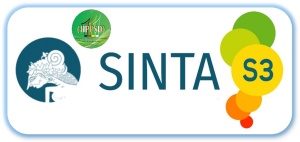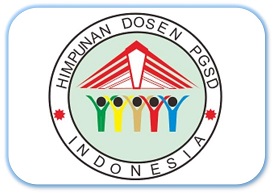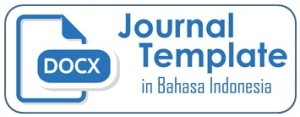Kajian Neuroscience dalam Pengembangan Ilmu Sekolah Dasar
 ), Kus Eddy Sartono(2), Chairil Faif Pasani(3),
), Kus Eddy Sartono(2), Chairil Faif Pasani(3), (1) (SCOPUS ID : 57207621480) Universitas Negeri Yogyakarta
(2) Universitas Negeri Yogyakarta
(3) Universitas Lambung Mangkurat
 Corresponding Author
Corresponding Author
DOI : https://doi.org/10.24036/jippsd.v4i1.110447
Full Text:
 Language : en
Language : en
Abstract
Keywords
References
Aldrich, R. (2013). Neuroscience, education and the evolution of the human brain. History of Education, 42(3), 396–410.
Arikunto, S. (2006). PROSEDUR PENELITIAN TINDAKAN KELAS. Bumi Aksara, 136(2), 2–3. http://digilib.uinsby.ac.id/1041/6/Bab 3.pdf
Bassett, D. S., & Sporns, O. (2017). Network neuroscience. Nature Neuroscience, 20(3), 353–364.
Batubara, H. H., & Supena, A. (2018). Educational Neuroscience Dalam Pendidikan Dasar. Jurnal Pendidikan Dasar, 9(2), 140–148.
Bear, M., Connors, B., & Paradiso, M. A. (2020). Neuroscience: Exploring the brain. Jones & Bartlett Learning, LLC.
Byrnes, J. P., & Fox, N. A. (1998). The educational relevance of research in cognitive neuroscience. Educational Psychology Review, 10(3), 297–342.
Caine, R. (2008). How neuroscience informs our teaching of elementary students. Comprehension Instruction: Research-Based Best Practices, 127–141.
Cannon, W. B., Britton, S. W., Lewis, J. T., & Groeneveld, A. (1927). Studies on the Conditions of Activity in Endocrine Glands: XX. The Influence of Motion and Emotion on Medulliadrenal Secretion. American Journal of Physiology-Legacy Content, 79(2), 433–465.
Darmalaksana, W. (2020). Metode Penelitian Kualitatif Studi Pustaka dan Studi Lapangan. Pre-Print Digital Library UIN Sunan Gunung Djati Bandung.
De Smedt, B., Ansari, D., Grabner, R. H., Hannula-Sormunen, M., Schneider, M., & Verschaffel, L. (2011). Cognitive neuroscience meets mathematics education: It takes two to tango. Educational Research Review, 6(3), 232–237.
Deak, A. (2011). Brain and emotion: Cognitive neuroscience of emotions. Review of Psychology, 18(2), 71–80.
Dewi, C. T., Fitri, N. W., & Soviya, O. (2018). Neurosains dalam Pembelajaran Agama Islam. Ta’allum: Jurnal Pendidikan Islam, 6(2), 259–280.
Dubinsky, J. M. (2010). Neuroscience education for prekindergarten–12 teachers. Journal of Neuroscience, 30(24), 8057–8060.
Ekman, E., & Krasner, M. (2017). Empathy in medicine: Neuroscience, education and challenges. Medical Teacher, 39(2), 164–173.
Fitri, R. (2017). Metakognitif pada proses belajar anak dalam kajian neurosains. JP (Jurnal Pendidikan): Teori Dan Praktik, 2(1), 56–64.
Hidayat, B. (2017). Pembelajaran Alquran pada Anak Usia Dini Menurut Psikologi Agama dan Neurosains. Annual Conference on Islamic Early Childhood Education, 2, 59–70.
Johnson, M. H., & De Haan, M. (2015). Developmental cognitive neuroscience: An introduction. Wiley-Blackwell.
Jones, P. H. (2009). Introducing neuroeducational research: Neuroscience, education and the brain from contexts to practice. Routledge.
Kasmawarni, K. (2018). Peningkatan Kedisiplinan Anak Melalui Penerapan Teori Nerosains di Taman Kanak-kanak Al Hidayah Aia Tabik. Jurnal Ilmiah Pesona PAUD, 5(2).
Katzir, T., & Pare-Blagoev, J. (2006). Applying cognitive neuroscience research to education: The case of literacy. Educational Psychologist, 41(1), 53–74.
Lane, R. D. (2000). Levels of emotional awareness: Neurological, psychological, and social perspectives.
Latifah, R. A., & Mahmudi, A. (2018). Pengaruh Pembelajaran Matematika dengan Pendekatan Brain Based Learning terhadap Kemampuan Penalaran Matematis Siswa SMP pada Materi Teorema Pythagoras. Jurnal Pendidikan Matematika-S1, 7(2), 58–66.
LeDoux, J. E. (1992). Emotion and the amygdala.
Lestari, S. (2014). Pengembangan Bahan Ajar Geografi Bergaya Novel Berbasis Otak Kanan. Edu Geography, 3(1).
Lexy, J. (n.d.). Moleong, 2011, metodologi penelitian Kualitatif. PT Remaja Rosdakarya, Bandung.
Malfliet, A., Kregel, J., Coppieters, I., De Pauw, R., Meeus, M., Roussel, N., Cagnie, B., Danneels, L., & Nijs, J. (2018). Effect of pain neuroscience education combined with cognition-targeted motor control training on chronic spinal pain: a randomized clinical trial. JAMA Neurology, 75(7), 808–817.
Marshall, P. J., & Comalli, C. E. (2012). Young children’s changing conceptualizations of brain function: implications for teaching neuroscience in early elementary settings. Early Education & Development, 23(1), 4–23.
Murray, E. A. (2007). The amygdala, reward and emotion. Trends in Cognitive Sciences, 11(11), 489–497.
Nasruddin, M., & Muiz, A. (2018). Tinjauan kritis neurosains terhadap konsep Qalb menurut Al-Ghazali. UIN Sunan Gunung Djati Bandung.
Pasiak, T. (2012). Tuhan dalam Otak Manusia: Mewujudkan kesehatan spiritual berdasarkan neurosains. Bandung: Mizan.
Said, A. (2017). Revolusi Mengajar Berbasis Neurosains. Prenada Media.
Saifurrahman, S. (2019). Desain Pembelajaran Keagamaan Islam Berbasis Neurosains. AL-MURABBI: Jurnal Studi Kependidikan Dan Keislaman, 6(1), 55–73.
Schachter, S. (1971). Emotion, obesity, and crime. New York, USA, Academic Press, Inc.
Setiawan, A. R., & Ilmiyah, S. (2020). Kecerdasan Majemuk Berdasarkan Neurosains.
Sidiarto, L. D. (2007). Perkembangan Otak dan Kesulitan Belajar Anak. Penerbit Universitas Indonesia (Ul-Press).
Tantowie, T. A. (2014). Pengembangan Model Pembelajaran Berbasis Neurosains untuk Meningkatkan Karakter Kreatif, Kerja Keras dan Rasa Ingin Tahu. Skripsi Tidak Diterbitkan. Yogyakarta: Program Studi Pendidikan Guru MI.
Wathon, A. (2016). Neurosains dalam pendidikan. Jurnal Lentera: Kajian Keagamaan, Keilmuan Dan Teknologi, 1(2), 284–294.
Wijaya, H. (2018). Pendidikan Neurosains Dan Implikasinya Dalam Pendidikan Masa Kini.
Wulandari, A., & Suyadi, S. (2019). Pengembangan Emosi Positif Dalam Pendikan Islam Perspektif Neurosains. Tadrib, 5(1), 51–67.
Zimmerman, B. J., & Schunk, D. H. (2012). Self-regulated learning and academic achievement: Theory, research, and practice. Springer Science & Business Media.
 Article Metrics
Article Metrics
 Abstract Views : 2220 times
Abstract Views : 2220 times
 PDF (1-15) Downloaded : 666 times
PDF (1-15) Downloaded : 666 times
Refbacks
- There are currently no refbacks.

This work is licensed under a Creative Commons Attribution 4.0 International License.







